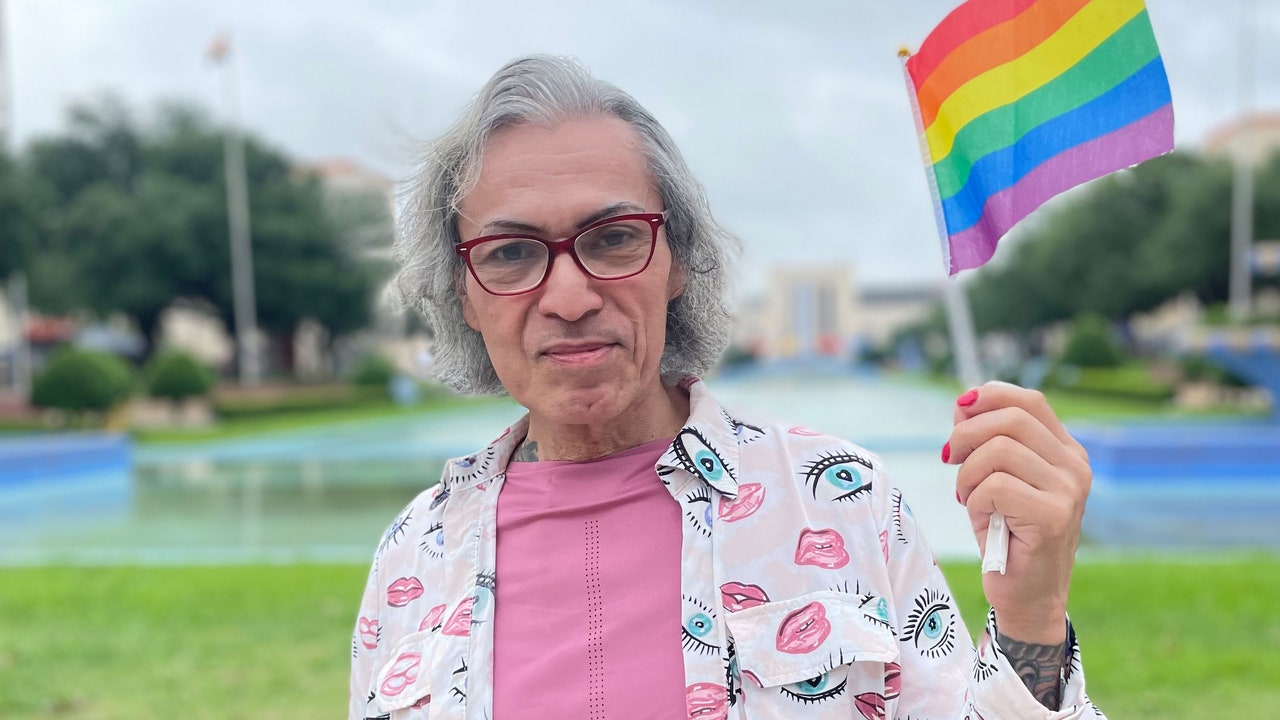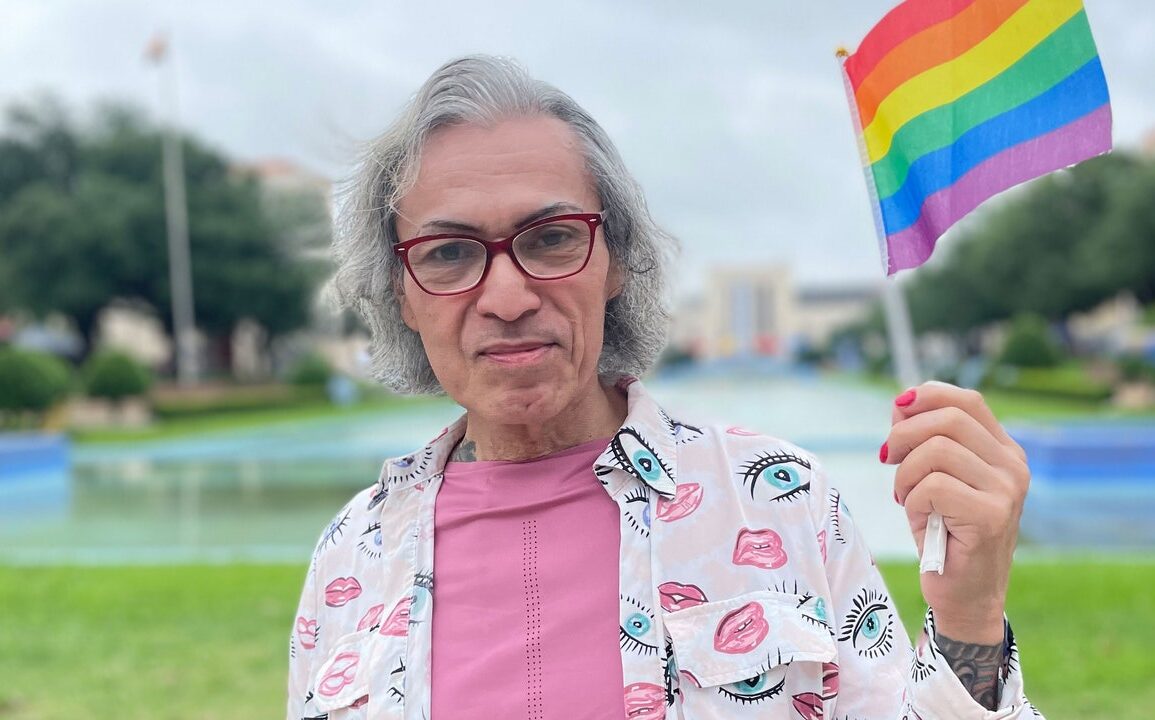
In one of the short’s most illuminating sequences, Gabriel reads aloud from a letter Jamie wrote after beginning hormone replacement therapy. “Things are going fine with the HRT, so you’re right; despite my advanced age, the hormones are working, and I’m gaining amazing results,” Diaz shares. “I’m even starting to tell people that I’m all woman, and I even believe it. I never knew how much transitioning would mean to me, but it is truly me, and I love it. How are things going with you and your T? You look amazing and happy, and that makes me happy.”
The filmmaker grows emotional when thinking of the moment she first heard of Diaz’s imminent release. “A few months [before], I was writing with her and complaining about how much it had been raining in New York, and she [replied] talking about how when she gets out, she can’t wait to stand in the rain,” Murthy says, adding, “That’s what I [began] imagining when we got the release date — her standing in the rain with a big smile on her face.”
On June 3, Love, Jamie will premiere as part of PBS’ Emmy-winning series, American Masters, a point Murthy knows will be especially significant for Diaz. “I’m just so happy that we were able to find this kind of home for the film and to showcase Jamie’s talent and art,” Murthy says. “This was her dream. She wants to be known as an artist, and this is the perfect platform for her to make her big debut to America.”
Jamie Diaz grew up in the Houston area of the early 1960s, where she showed early signs of talent as a visual artist. Even as a child, the artist gravitated toward the works of Rembrandt and Vermeer, Dutch masters’ whose use of earth tones and unexpected sources of light would serve as inspiration for her own canvases years later. Diaz’s dreams of being a painter would be put on pause in her early thirties, when a conviction on felony drug charges turned into a life sentence.
These were traumatic years for Diaz, punctuated by all the regular indignities of life in a Texas prison, plus the bevy of hardships stemming from her liberated gender and sexuality. At one point, Diaz sought solitary confinement after she was assaulted on the unit. She also sought psychic safety through her art, which brims with visions of liberation. Looking at Diaz’s wild, effusive, sometimes carnal pieces, you’d hardly think she produced most of her life’s work while incarcerated; that she made her brushes with donated hair; or that the whites of her pictures came from the leftover paint used on prison walls. This is by design; for Diaz, painting has always embodied not just a creative calling, but a method of transportation. “I go all over the world in my mind when I’m working,” the 66-year-old artist told Them, in 2022. “Sometimes I think I even go to other worlds.”
This post was originally published on this site be sure to check out more of their content.







